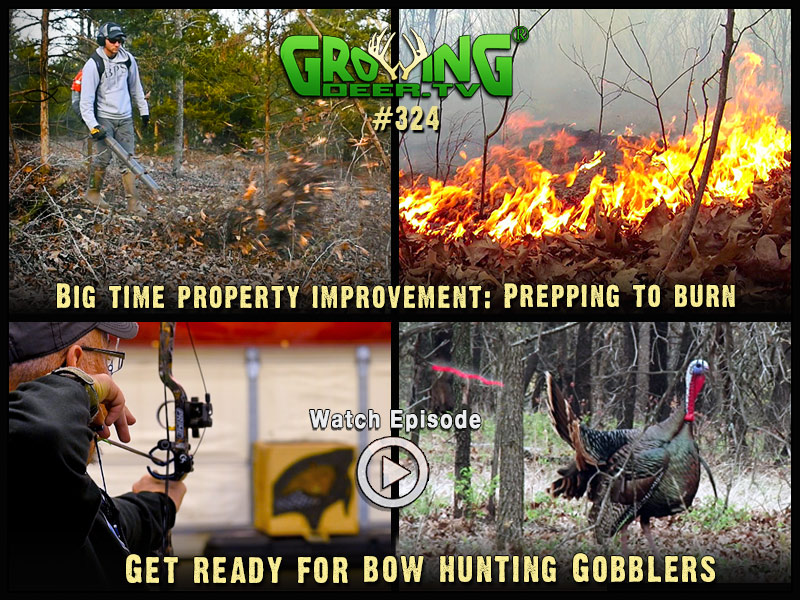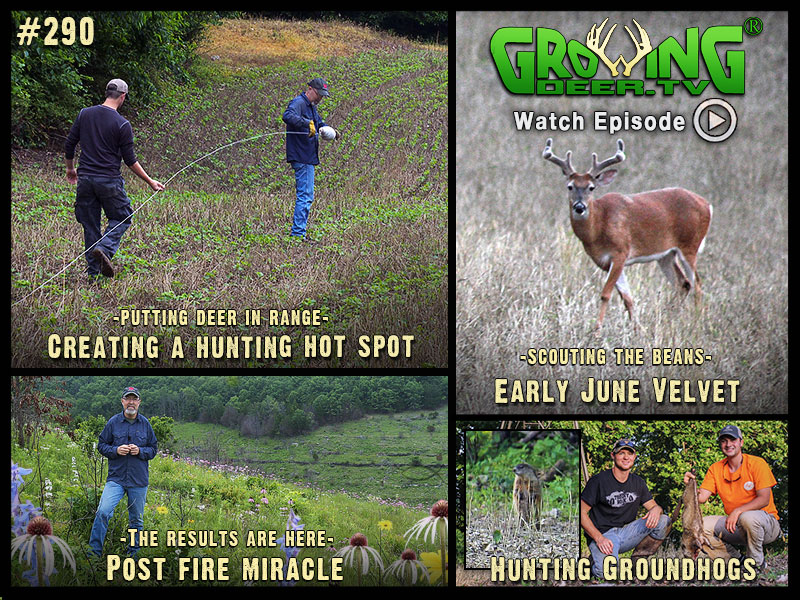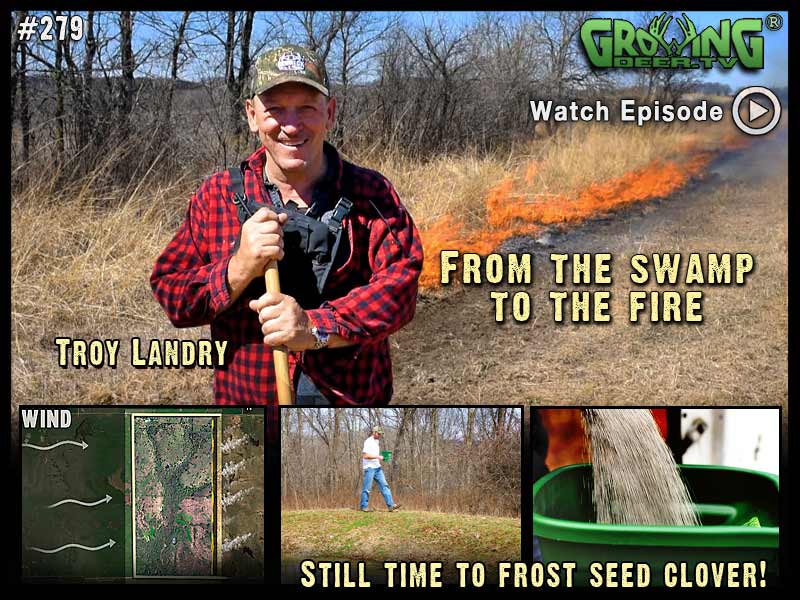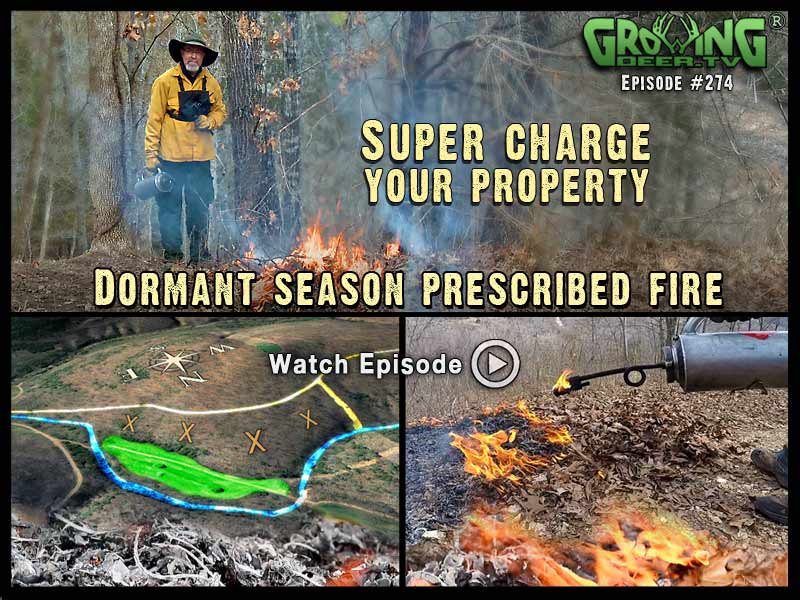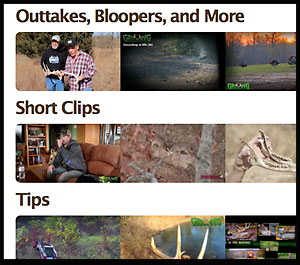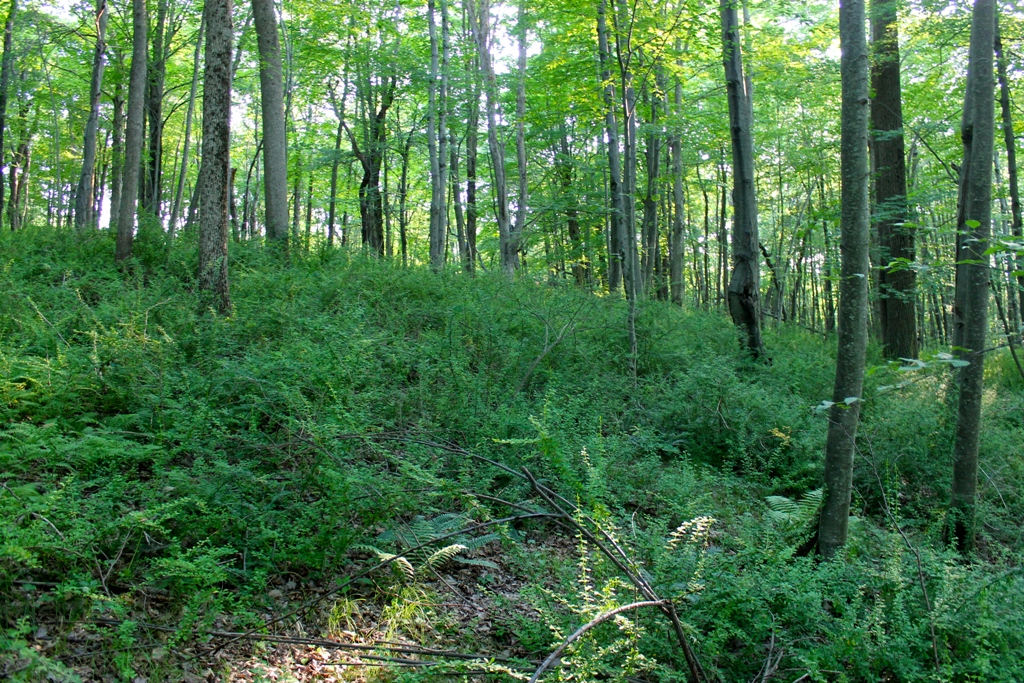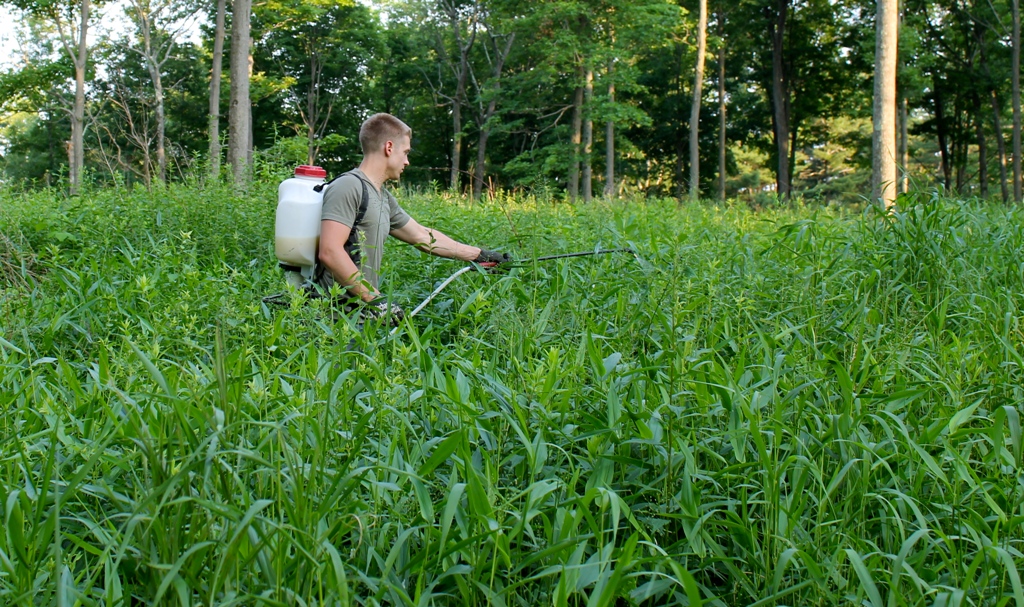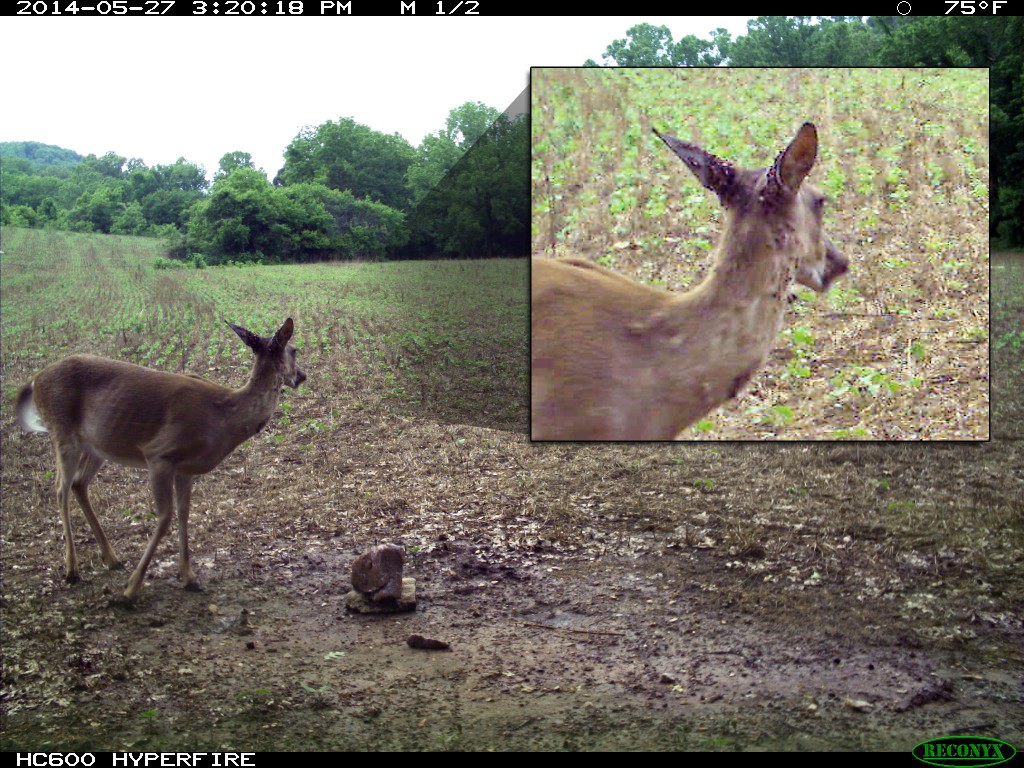Category: Whitetail Habitat Management
Why Do We Burn Before Growing Season?
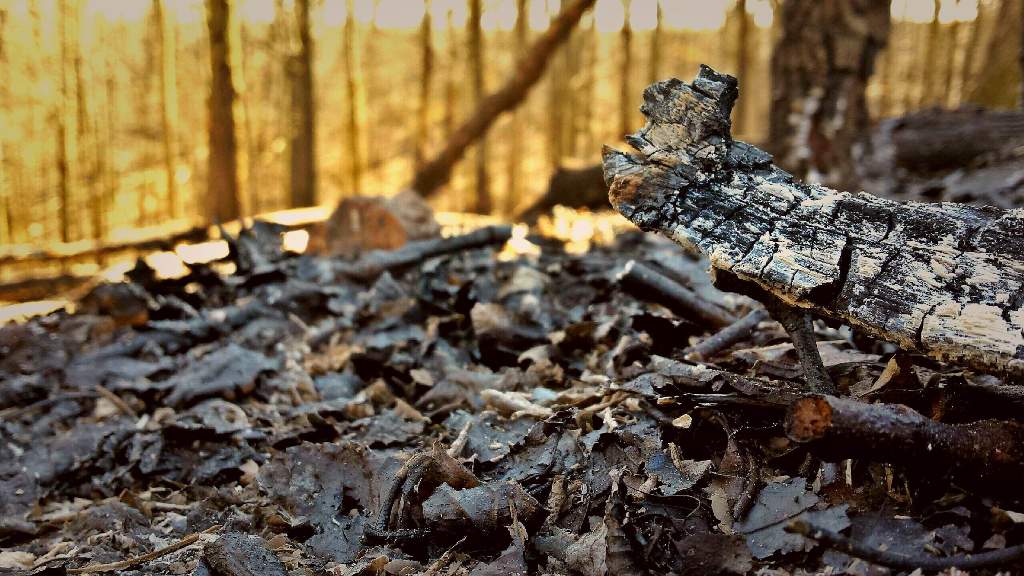
The results of our recent burn show promising signs for spring green up in this block of timber.
Do you hunt timbered ground? The Proving Grounds is dominated by timber. That means we have a lot of timbered ground that we have to manage. As often as we can, we choose to manage our land in the most natural way possible. This helps to keep our land progressing in its intended fashion.
One of the best ways we chose to manage our timbered acres is by burning each year before the start of the growing season. This accomplishes many goals for both of our habitat and deer management plans. The intention during each of these burns is to remove all the duff or leaf litter on the forest floor. These leaves or fuel have built up over a few years since the previous burn was completed. During this time of the year on days when the humidity levels are low, we begin our prescribed fire!
Each burn unit has set fire lines that have been blown days in advance. This allows us to act fast when the weather conditions turn favorable to burn. These prescribed fires we conduct within the timber are slow backing fires. We do not set a head fire in our timbered areas. Our goal is to remove all the leaves, exposing the soil. We do not want to damage our large hardwood trees. When we remove the leaves from within the timber, the soil is then exposed. When the growing season begins, sunlight and the warming soil temperatures allows for germination and new growth to spring up. These burned areas are quickly converted from simple leaf duff to a “timbered food plot”. Deer are natural browsers, so with the diversity of vegetation that begins to grow, this area becomes highly attractive to them. Turkeys also frequent these areas as they will consume earthworms and grubs that are exposed by removing the leaves. They will make a return when the new vegetation begins to sprout out of the ground.
Burning is not just a management tool that benefits your timber; it also creates additional forage for wildlife. We are looking forward to spring green up so we can provide you with updates on the progression of our prescribed burns.
GrowingDeer together,
Matt Dye
Warning: This blog contains information about prescribed fire which is a management tool for trained professionals using the appropriate tools for the situation.
The Number One Tool For Better Hunting – Episode #324
Click here to register for Spring Field Days 2016!
What’s our best tool for better hunting? Fire is probably the #1 way to make most properties more attractive to deer and turkey. Watch as we prepare to manage hundreds of acres of timber and native grass using prescribed fire! WARNING: This might get you so excited you’ll want to run out and drop a match – please don’t. Get some training first.
Preparation for turkey season has begun! Bow hunting for turkeys requires changing your practice techniques. We will show you how we prepare for those close range strutters.
Tip of the Week: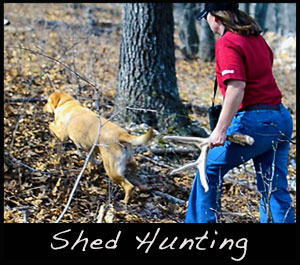
Where to find shed antlers?
Concentrate efforts on travel corridors and late season food sources.
After a fresh rain is a great time to find sheds. Antlers are shiny, leaves are dull.
Warning: This video contains information about prescribed fire which is a management tool for trained professionals using the appropriate tools for the situation.
Managing Feral Hog Populations
This week Adam and I are in Western Oklahoma. We have a client whose property has recently experienced a lot of hog damage. Feral hogs are not native to this continent. They arrived years ago as early explorers discovered the Americas. These non-native invasive species are tough to manage as they repopulate quickly. This is because feral hog sows can produce 2 to 3 litters each year! Each litter size can range from 10 to 15 piglets. This means one sow can rear 30 to 45 piglets in a given year.
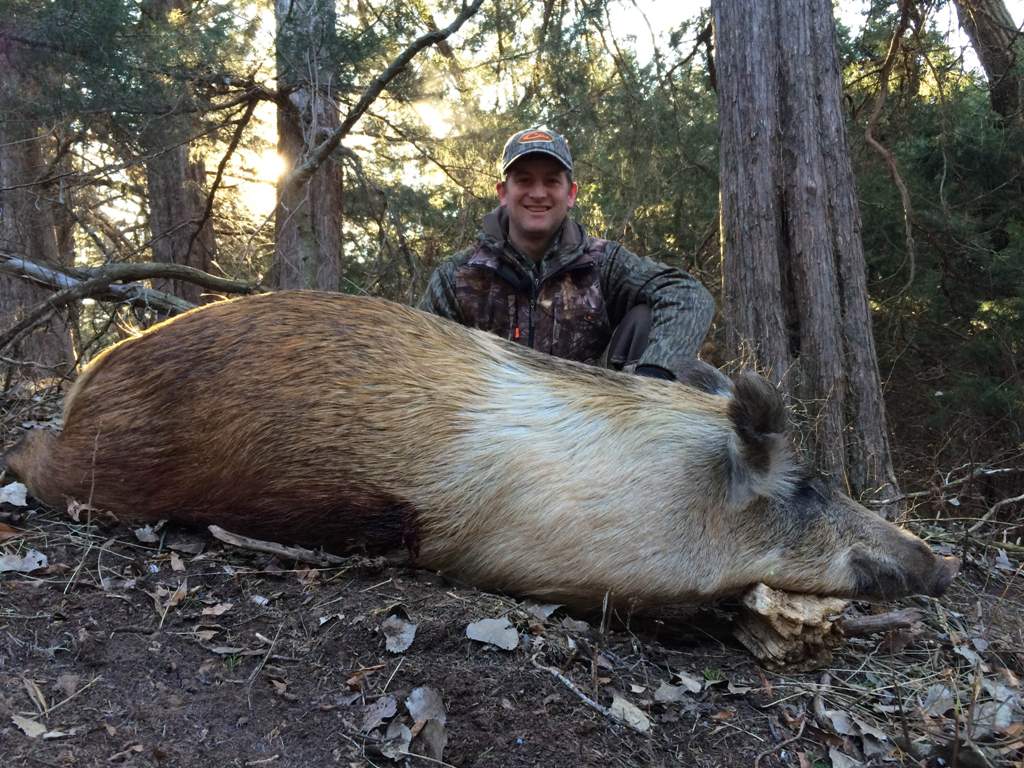
Adam recently tagged this large sow during a hunt in Western Oklahoma.
How do you manage such an active population? Trapping feral hogs has proven to be the most effective way to manage these populations. Trapping allows a landowner to potentially remove a large amount of hogs at one time. Entire sounders have been trapped and removed with trapping efforts. If trapping is not an option, intense hunting pressure is the next most effective way to keep hogs from doing damage to a property. Feral hogs react to intense hunting pressure. They will often leave an area that they feel is unsafe.
Baiting an area, where legal, will condition hogs to this specific location. When hogs become use to the bait site and start using it during daylight hours, then it is time to hunt! Put in time and hunt these areas. Not only will you be harvesting and removing feral hogs, but sending a message to them as well. The message is that this area is now unsafe! Hopefully this will result in hogs moving off your property.
Growing Deer together,
Matt
Manipulating Deer Travel Patterns
Deer often take the path of least resistance. They may seem to meander aimlessly when they are browsing, feeding on acorns, etc. However, when they travel from feeding to bedding areas they almost always take the path of least resistance that they don’t associate with danger.
In some areas such as farm country where cover is limited it’s easy to find existing deer trails. Hunters in these areas often place stands along these trails.
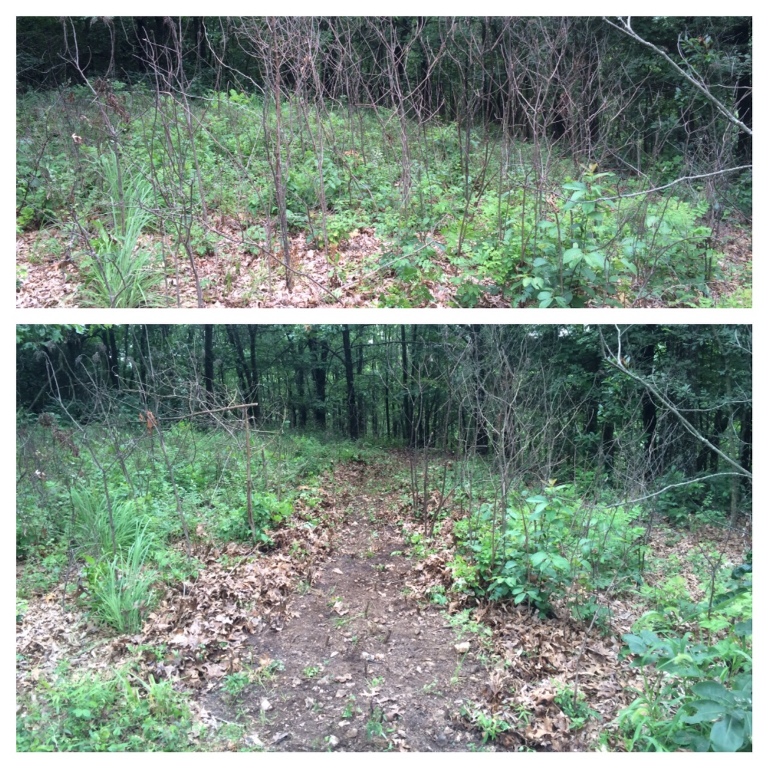
A before and after look at a path made next to one of the treestands.
In areas where the landscape is primarily covered by timber deer tend to walk in general areas because cover is often similar over large areas. In timber stands that are about the same age there isn’t an obvious path of least resistance.
This scenario can work in a hunter’s favor because it is easy to create a path of least resistance where it’s an advantage to hunters! By using a handsaw, weed eater, backpack blower, and/or a garden rake it’s easy to create a path of least resistance! I’m amazed at how fast deer will adapt to trails created using this simple technique.
Keep in mind deer aren’t going to travel hundreds of yards simply to use such a trail. However, if deer pass within 100 yards or so of an area (but not on a specific trail) they will often adapt and bottleneck down to using a path created as described above.
If you are frustrated because deer seem to wander in general areas rather than use a trail try creating a path of least resistance. It’s a great technique that can help add venison to your freezer!
Nicolas Halchin
Preparing For Hunting Season – Episode #290
Happening now: young soybean food plots are a great place to film early June velvet. We got the cameras out and were not disappointed. A summer project for deer season: sweet! We just created a HotZone harvest area. This hot spot is designed to bring deer into bow range this fall. We’ll show you how we did it.
Fire last season – today’s amazing results!
Watch this episode as we return to the scene of last season’s prescribed fire. It’s amazing. The fire released a stunning amount of plant diversity providing deer and turkey a very large variety of food and bedding throughout the growing season. A key addition to nearby food plots! Fire is a big effort, that can give you a big return!
Oh no! Groundhogs are all over our soybeans! Where’s the Winchester? It’s time for some summer hunting! 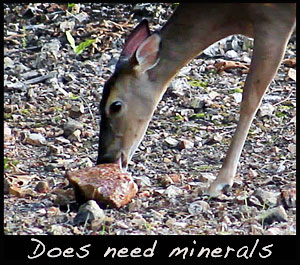
Tip of the Week:
Hungry fawns are on the ground. Help does get all the trace minerals they need. We use all natural Trophy Rock; helping does raise healthy fawns. PS: Add a trail camera too!
Burning With Troy Landry – Episode #279
The gator man, Troy Landry, is out of the swamp and on dry ground ready to burn! Watch this episode to see the follow-up to Grant prescribing fire to improve Troy’s Kansas hunting property. Plus, there’s still time to frost seed clover. Adam demonstrates how to repair older clover plots this time of year.
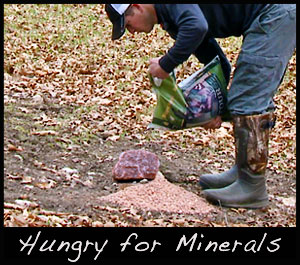
Tip of the Week:
Spring: Both bucks and does crave minerals.
Strategically place some all natural Trophy Rocks.
Then add a trail camera and watch the show!
Warning: This video contains information about prescribed fire which is a management tool for trained professionals using the appropriate tools for the situation.
Prescribed Fire – Episode #274
It’s a great time of year for using prescribed fire on your proving grounds. The benefits of fire are huge! Properly used, fire promotes native forage, cover and kills ticks! North and east facing slopes can be difficult to burn, but the dormant season (right now) is your best bet to get good results. Caution: Fire is never satisfied. Watch this episode as we take you from start to finish on a dormant season prescribed fire!
Want more Troy Landry?
Check out our new web page, Clips!
It’s where we have extra clips not used in the main episode.
There’s more Troy, just go to Clips!
Warning: This video contains information about prescribed fire which is a management tool for trained professionals using the appropriate tools for the situation.
Dormant Season Prescribed Fires
February can be a very slow time of year for hunters, but not for us! There are plenty of things every wildlife manager can do during this time of year to improve the habitat at their property! One project that we’ve been practicing lately is prescribed fires!
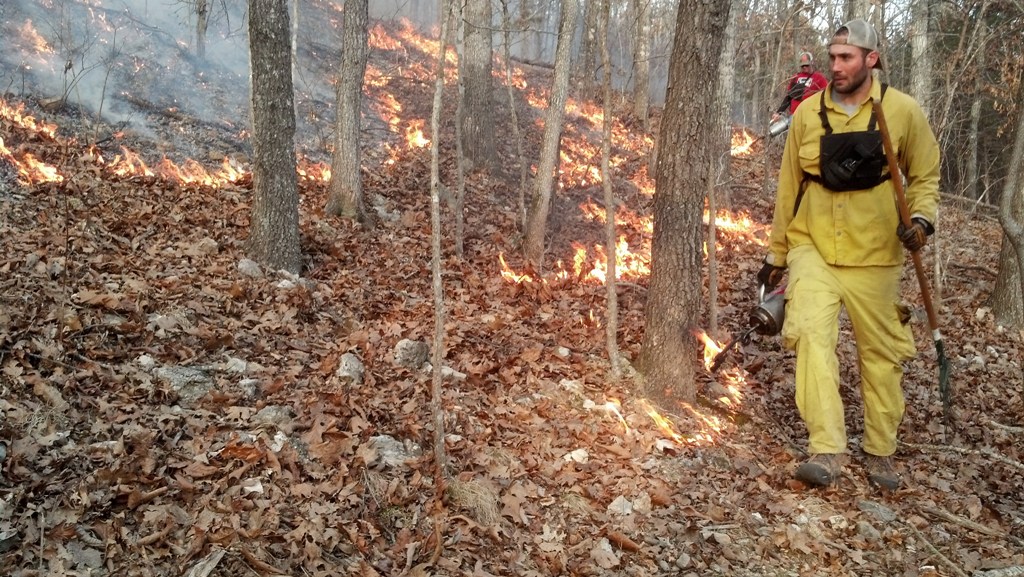
Always be careful when using prescribed fire because you can cause serious damage to trees.
There are areas on The Proving Grounds that we haven’t been able to successfully burn over the years due to slope, shade, moisture, etc. Typically these areas are on the eastern or northern slopes where during the summer the leaves on the trees shade out the forest floor and the leaves are usually still too damp to burn. During this time of year we can reach low humidity levels; when timed with dry conditions and no leaves on the trees, we can burn areas that haven’t seen fire in several years. Burning areas like these will remove most of the leaf litter and decrease the amount of ticks in this area. This happens when the tick habitat (leaf litter) is removed during the fire.
It’s a great time of year for prescribed fires on your property! Don’t let the dog days of winter get you down, get out and improve your habitat!
Daydreaming of long beards and long spurs,
Adam
Warning: This blog contains information about prescribed fire which is a management tool for trained professionals using the appropriate tools for the situation.
Controlling Invasive Plants to Improve Deer Habitat
The heat of summer is upon us and our food plots and native vegetation are starting to mature. For me, this sea of green is a reminder to look at all the plants that are growing on the land that I hunt. Specifically, I am looking for invasive plants. When I find them, I mark the locations of these invasive species on a map. This helps me to more efficiently implement a control plan as well as track the spread of individual species from year to year. These plants take valuable resources such as sun, space, nutrients, and water away from other native vegetation that are more beneficial to a variety of wildlife species. Controlling invasive weeds is an important management tool to promote plants that provide quality cover and nutrition for whitetails.
A joint project by the University of Georgia and the U.S. Forest Service has a website that can help you identify potential invasive plants in your area (http://www.invasive.org). There are numerous invasive plant species throughout the United States. Each region of the US has different types of invasives that might include plants such as: princess tree, Russian-olive, mimosa trees, Japanese privet, nandina, Japanese barberry, shrubby nonnative lespedezas, bamboo, kudzu, Johnson grass, etc. After identifying an invasive species to target, it is important to consider multiple control methods. Many invasive plants can be controlled through prescribed fire, herbicide, or physical removal. Check out GrowingDeer.tv episodes 81, 185, 221, 222 for more information on a few of these methods.
One problem species in my neck of the woods is Berberis thunbergii or Japanese barberry. This spiny, deciduous shrub was introduced to the United States as an ornamental landscaping plant. Due to its resistance to deer browsing and ability to grow in full sun or shade, it is highly invasive. In the area I live, entire hardwood forests are laced with an understory of barberry.
Through chemical control (application of Glyphosate) and physical removal of Japanese barberry, it has been possible to transform undesirable habitat into a biologically diverse savannah that benefits deer and other wildlife. It is important to note that invasive control is often an ongoing process. Although this property has seen some success I must actively control new sprouts from the seedbed to prevent the return of barberry. Each year I walk all of the established savannahs with a back pack sprayer full of Glyphosate and treat any emerging barberry. If barberry is a problem on your property, click this link for more detailed information on alternatives for control.
There is no doubt that controlling invasive plants is a long process punctuated with a lot of hard work. However, a little extra boot leather each year ensures that my initial investment will pay huge dividends for the wildlife here for years to come. Whether you have a large invasive problem or just a few plants starting to pop-up next to that new food plot you put in last spring, controlling invasive plants is a beneficial tool to improve the wildlife habitat on the property that you hunt.
Happy trails,
Hunter
Prescribed Fire Can Reduce Predators And Improve Deer Hunting
Its fawning season and many fawns will be killed by predators. There’s often a substantial difference between the number of fawns born and the number that survive until six months of age. That’s why most biologists use the term “recruitment” to describe the number of fawns that survive to six months of age.
During the past few years there have been studies by many universities that show coyote and bobcats can kill a high percentage of fawns, even in areas with good hiding cover. More and more landowners are acting to balance the predator and prey populations on their property as a deer and turkey management tool.
Unfortunately, most landowners ignore the most numerous predator – ticks. The Center for Disease Control reports that cases of tick borne illness in humans have been increasing for a decade. Most studies indicate that tick populations are increasing.
Some folks are fast to blame increasing deer populations for the increasing tick populations. This is odd given many deer populations are decreasing throughout the whitetail’s range. Tick populations are strongly influenced by the quality of their habitat in addition to available hosts.
Simply stated 50 deer can feed as many ticks as 100 deer! However, very few ticks survive without good habitat. What is good tick habitat? You might be surprised to learn that moisture is one of the primary ingredients of good tick habitat. A deep layer of leaves, fields of grass that are rarely mowed/burned, or any layer of vegetation that holds moisture can be good tick habitat.
This is because ticks require moisture to survive. If ticks become dry (desiccated) they die rapidly. Researchers have shown that proper use of prescribed fire is an effective tool to reduce tick populations. Fire can remove duff layers (organic matter of fallen leaves, etc.) and moisture for long enough to cause ticks to desiccate. However, ticks will repopulate the area once a duff layer develops. Ticks will be brought into the area on mammals seeking the lush vegetation resulting from the fire.
To significantly reduce tick populations often requires the uses of prescribed fire on an annual or bi annual basis.
Growing and managing deer together,
Grant



